Table of Contents
Different Software Testing Methodologies for Various Project Needs
Software development is a complex process, requiring rigorous testing to ensure that the final product is both functional and reliable. Testing is an integral part of the software development life cycle (SDLC), and over the years, various testing methodologies have been developed to address the unique challenges posed by different types of projects. Each testing methodology serves a specific purpose, catering to the diverse requirements of software projects in terms of scope, complexity, time constraints, and quality standards.
This blog will explore some of the most commonly used software testing methodologies, explaining their relevance and how they align with different project needs.
1. Waterfall Testing Methodology
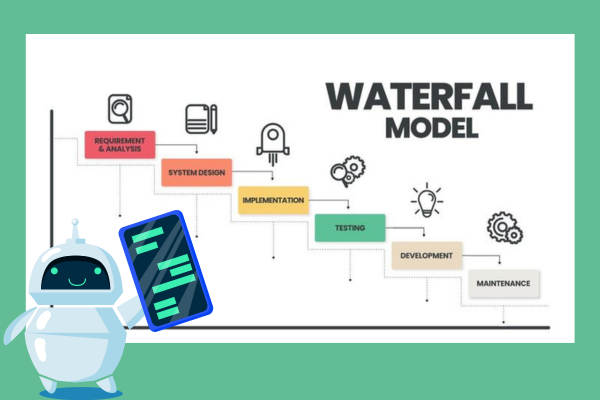
The Waterfall model is one of the oldest and most traditional software development and testing methodologies. In this approach, the development process is linear and sequential, flowing like a waterfall through various phases, including requirement analysis, design, implementation, testing, deployment, and maintenance. Testing in the Waterfall methodology typically occurs after the development phase is complete.
Characteristics:
- Sequential Process: Testing is done only after the entire system is developed.
- Documentation-Driven: Emphasizes thorough documentation at every stage.
- Clear Milestones: Each phase must be completed before moving on to the next.
Suitability:
In Software Testing Methodologies, The Waterfall methodology is ideal for projects with well-defined requirements that are unlikely to change. It works best for smaller projects or projects with a fixed scope, where the emphasis is on thorough documentation and clear milestones.
2. Agile Testing Methodology
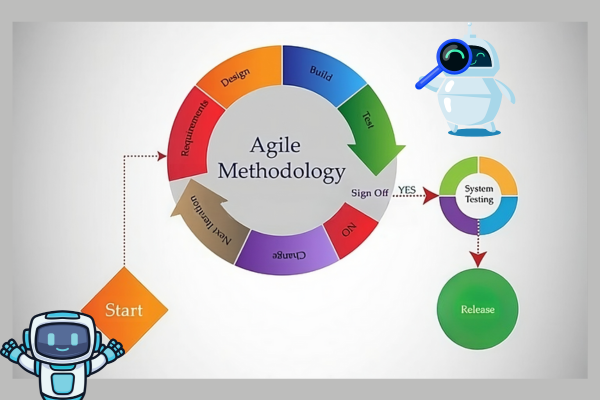
Agile methodology is a modern approach that has gained widespread popularity due to its flexibility and adaptability. Unlike the Waterfall model, Agile emphasizes iterative development, where testing occurs simultaneously with development. Agile projects are divided into small, manageable iterations called sprints, and testing is an integral part of each sprint.
Characteristics:
- Iterative and Incremental: Testing and development occur in short, repeated cycles.
- Collaboration-Focused: Encourages close collaboration between developers, testers, and stakeholders.
- Flexibility: Accommodates changing requirements even late in the development process.
Suitability:
In Software Testing Methodologies, Agile is well-suited for projects where requirements are expected to evolve or change frequently. It’s ideal for projects that need quick delivery of working software and where continuous feedback from stakeholders is essential.
3. V-Model Testing Methodology
In Software Testing Methodologies, The V-Model, also known as the Verification and Validation model, is an extension of the Waterfall model. In this methodology, development and testing activities are planned in parallel. Each phase of development has a corresponding testing phase, ensuring that every aspect of the system is tested as it is developed.
Characteristics:
- Parallel Development and Testing: Testing is planned alongside development.
- Verification and Validation: Emphasizes verifying and validating each part of the system.
- Structured Approach: Highly structured with clear testing phases aligned with development phases.
Suitability:
In Software Testing Methodologies, The V-Model is suitable for projects where requirements are clear and well-defined from the beginning. It works well in safety-critical industries like healthcare, aviation, and automotive, where thorough verification and validation are crucial.
4. Spiral Testing Methodology
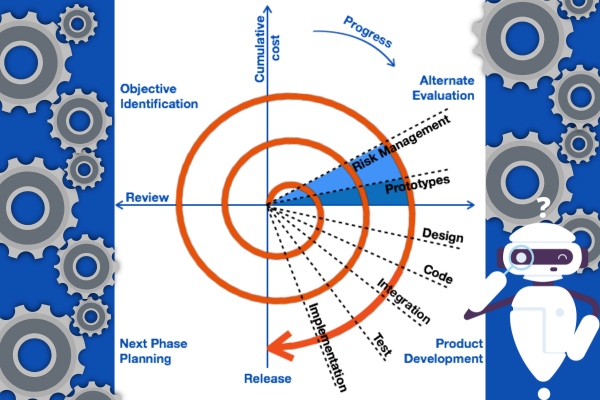
The Spiral model combines elements of both iterative and waterfall models, emphasizing risk management. This methodology involves repeated cycles of planning, risk analysis, engineering, and evaluation, with testing integrated into each cycle. The project passes through these cycles, or “spirals,” allowing for incremental refinement and improvement.
Characteristics:
- Risk-Driven: Focuses on identifying and mitigating risks at each iteration.
- Iterative Process: Involves multiple iterations of development and testing.
- Flexibility: Allows for changes and refinements as the project progresses.
Suitability:
In Software Testing Methodologies, The Spiral model is best for large, complex, and high-risk projects. It is particularly useful in scenarios where requirements are uncertain or may change, and where risk management is a priority.
5. Incremental Testing Methodology
Incremental testing involves developing and testing software components in small, manageable increments. Each component is tested individually and then integrated with previously tested components to form a complete system. This approach allows for early detection of defects and ensures that the system is tested as it grows.
Characteristics:
- Component-Based Testing: Focuses on testing individual components before integration.
- Early Defect Detection: Helps identify and resolve issues early in the development process.
- Continuous Integration: Promotes ongoing integration and testing of components.
Suitability:
In Software Testing Methodologies, Incremental testing is ideal for projects with complex systems that can be divided into smaller, self-contained components. It’s also suitable for projects where early testing and feedback are critical to the success of the project.
6. Exploratory Testing Methodology
Exploratory testing is an unscripted, informal testing approach where testers actively explore the application to identify defects. Unlike traditional testing methodologies, exploratory testing does not rely on predefined test cases. Instead, testers use their creativity, experience, and intuition to discover issues that may not be captured by formal testing.
Characteristics:
- Adaptive and Creative: Testers adapt their approach based on their findings during testing.
- No Predefined Test Cases: Relies on the tester’s expertise and insight.
- Real-Time Learning: Testers learn about the system as they test it, uncovering unexpected issues.
Suitability:
In Software Testing Methodologies, Exploratory testing is suitable for projects where formal test cases may not cover all possible scenarios, such as in agile environments or when testing new and unfamiliar applications. It’s also effective when time is limited, and quick feedback is required.
7. DevOps Testing Methodology
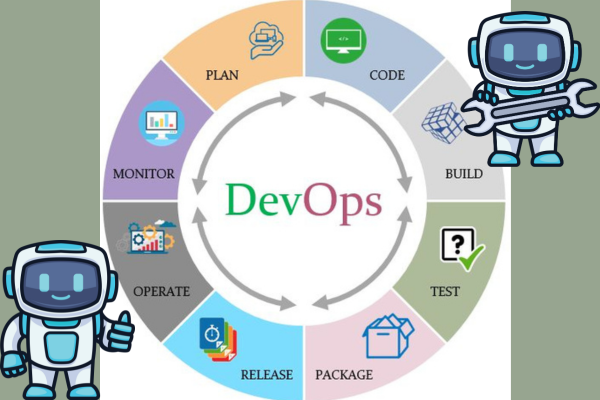
DevOps is a methodology that integrates development and operations teams to improve collaboration and productivity. In DevOps, testing is automated and continuous, to deliver high-quality software faster. Continuous integration and continuous deployment (CI/CD) pipelines are used to automate the testing and deployment process.
Characteristics:
- Automation-Driven: Relies heavily on automated testing tools and CI/CD pipelines.
- Continuous Testing: Testing is integrated into every stage of the development pipeline.
- Collaboration: Encourages collaboration between development, testing, and operations teams.
Suitability:
In Software Testing Methodologies, DevOps testing is ideal for projects that require rapid, frequent releases and high levels of automation. It’s particularly effective for large-scale applications where continuous testing and deployment are essential for maintaining quality and stability.
Conclusion
The diverse range of software testing methodologies developed over the years reflects the varying needs of different projects. From the structured approach of the Waterfall and V-Model to the flexibility of Agile and the risk management focus of the Spiral model, each methodology offers unique advantages that can be leveraged depending on the project requirements. Understanding the strengths and limitations of each testing methodology allows teams to choose the most appropriate approach, ensuring that the software meets quality standards and is delivered on time.
In today’s fast-paced development environment, selecting the right testing methodology is crucial for project success. Whether it’s a small, well-defined project or a large, complex system with evolving requirements, there is a testing methodology that can cater to the specific needs of the project, ensuring that quality remains at the forefront of the development process.

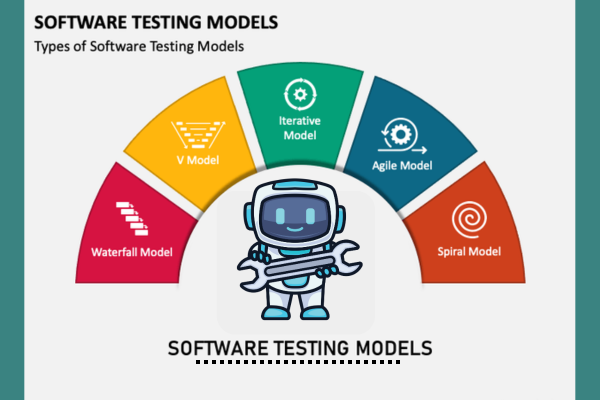
Very nice information .. added some more points in knowledge..